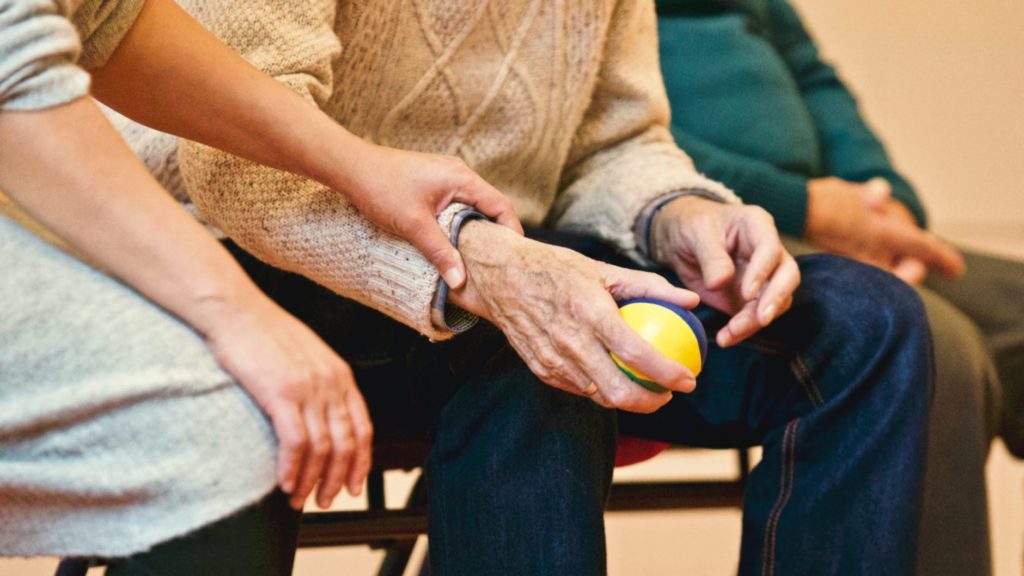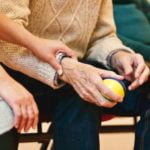Aging and Inequality

Author: Danielle Victor
Aging is an inevitable stage life’s process. Along with old age comes the deterioration of one’s health, and the loss of an ability to care for oneself without assistance. In this stage of life, an older person is at risk of disability, and often lacks self-dependency. It is also important to note that different cultures view aging differently therefore they treat their elderly differently. Before the internet, older generations were our ‘encyclopedia’. In the African American culture, elders were the ‘Ancestry.com’ at annual family reunions. Elders provided information on their parentage and passed down life lessons and stories. They were also walking ‘cookbooks’ before the Food Network. Whatever the younger generations needed, they could always go to their grandmothers and grandfathers for help. How we look at the older generation is a reflection of who we are as a society.
Younger generations have been missing a fuller understanding of their elder counterparts. The more obvious & visible sign of aging is shown in the skin ‘wrinkle’, but that is like a mask and a barrier. Sarah Irwin, the author of an article “Later Life, Inequality and Sociological Theory; Aging and Society”, says “the mask of aging” has been advanced as a description of a tension between bodily appearance and capacities. The mask refers to the aging body, or ‘exterior’ which hides the true, young, spirit ‘within’.” First, signs of aging appear in the skin by fine lines and over time wrinkles, but those signs intensify differently depending on the person lifestyle, the gene, and the nutrition. The assumptions and generalizations people have when only seeing the exterior-the wrinkles- are judgments that many elderlies force to deny themselves in self-defense. Many elders don’t accept this label, they rephrase it by calling themselves forever young.
One might reflect on how elders are thought of & treated in America- Isn’t it immoral as well as a wasted valuable asset to dismiss older people in our society? Author Irwin, writes “later life has explored various processes seen to shape the marginalization and relative disadvantage of older people in contemporary society.” To discard the builders of today’s society by ageism can be argued that they are being treated unfairly by us. An older generation which can be supported to be educated, healthy, and cared for preserves a resource which may serve to bring their volunteer work into their communities. Their contributions are also evident because many elder grandparents serve as caregivers to youngsters while parents work.
Lynne Berry, WRVS chief executive of the Royal Voluntary Service, which is a national charity built on local volunteering that gives support to people in hospitals and communities, in an interview with David Brindle, Public Services Editor of The Guardian, in March 2011 says “we want to see the contribution made by older people really change the story from them being a drain on society to them being the most extraordinary resource.” Even though the aging population isn’t getting the support it deserves, it continues to add support to communities by doing volunteer work. They aren’t a burden on the economy, they are net contributors. They do it even in the face of social bias, inequality, & financial struggles. Another article by Northwestern Mutual, BRANDVOICE in Dec 29, 2014, “Older and Wiser? How An Aging Population May Impact The Economy” written by Jeff DeAngelis, former chief investment officer of Northwestern Mutual Wealth Management Company who says “Is Age Really Just a Number? This shift is happening as a result of steadily rising longevity (Americans are not only living longer; they’re living much longer), but that’s not the whole story. We’re also having fewer children, which is creating a shift in the age profile of this country”. Economic woes hit the aged especially hard. Elderlies are suffering from inflation. For example, a 75 years old male who worked since 1961 with a minimum wage of $1.15 an hour, retired in 2008 with an income of $32000. $32,000.00 in 2008 had the same buying power as $37,559.12 in 2018 with an annual inflation’s rate of about 1.61%. That man’s buying power becomes dangerously limited. He would not be able to afford to live comfortably in a city like New York City. Yet for every year while receiving a ten-dollars raise from Social Security, he would have to pay fifty dollars more for home care services. Based on his income, what it shows is that as time passes and the inflation rate increases, the more difficult life becomes for someone on a fixed retirement income. Baby boomers have been forced to reenter workforce to keep up with today living’s cost.
Socioeconomically, gender and traditional societal gender roles play a large role in the wealth disparity seen between older men and women. Traditionally, men are associated as the bread winners while women are expected to take care of the children and the household- indeed, women have been an unpaid labor force in the home. As a result, the poverty among elderly women is more extensive than elderly men. Too many elderly women only receive survivor benefits from their late husbands, which are less than their male partner’s salary, and the lifestyle they were accustomed to.
Ironically, the young as well as the old often share rejection in the workplace. The author Irwin writes “The young and the old are seen to experience exclusion from various forms of meaningful social participation and their voices are unlikely to be heard in contemporary society”. In the labor force, a young person after graduating expects to experience many rejections when applying for a job. Employers’ main criticism to new grads is that they don’t have enough work experience for the job in question. What is said is that he/she has to accumulate experience before applying for the job; but if they don’t hire this new grad, when will he/she gain an acceptable experience? It is the same for the baby boomers who are the old among us. They are forced to exit their workplace because of age irrespective of their ability to do the job. In years prior to the seventies, before the rise of technology, companies & factories had employees where it was imperative that they knew their company inside and out. Now people are disposable because many job functions at factories have been replaced with machines…and workers who age out are the first to go. The question must be asked: Now you want to put them out because they are too old? Is that the real reason? Or is it because of their seniority after many years, resulting in higher hourly wages? Is cost efficiency replacing every older worker with 3 or 4 inexperienced new employees at start up salaries?
Typically, the aged in the U.S. receive assistance from the government through services such as the Social Security Administration, Medicaid, and Medicare; but support from these is dependent the jobs and professions they held earlier in life-the safety net is not always sufficient. One’s family’s values has everything to do with how that elder is being treated. Because I’m in the Home Care field, I bear witness to varied situations. Some children and grandchildren provide additional income, live or visit, and take good care of their elderly loved ones. Some of them solely provide monitory assistance. Others exploit their “loved one” and use them as a piggy bank, only showing up around the time when their family member is about to receive their monthly Social Security Income.
The aging population in the United States of America is seen an easy target. Too many elderly people are often alone and vulnerable. Loneliness is one of the biggest issues-whether rich or poor. Often alone at home, they hope to hear from anyone. Sometimes unexpected calls come from people or fake relatives pretending to be grandchildren saying that they are in a legal bind and want grandpa or grandma to send them money to pay a lawyer. Sometimes the elderly fall victim to these scam artists. Those predators can be complete strangers but sadly, it is also common for it to come from family members. As a Home Health Aide, I’ve witnessed these types of situations. In those cases, I make sure to report it to my agency as well as to a family member. It’s important for all parties involved, including myself, to be aware of potential scams. Each family has its own set of personalities. Some relatives protect their parents and grandparents by providing additional income to ensure safe and cleaned living conditions, others help their elderly loved ones by monitoring and budgeting their income, and then there are those who wait for the beginning of the month to borrow money and leave grandma broke. I’ve actually seen old people need to borrow money from an aide.
In nursing homes and assisted living facilities, one hears news of elders suffering abuse by rape, inadequate care, or deadly diseases like HIV and AIDS. Many nursing homes have below standard sanitary conditions for their residents as well as insufficient staffing. In my own experience, on a floor with about forty residents, only four certified nursing assistants are present during the day and there are only two certified nursing assistants in attendance for the night-shift. That is a ratio of 10/1 and 20/1. Frail resident patients are at risk for decubitus ulcer and body smell in no small part to residents being scheduled for only one or two showers a week. Residents might even miss those weekly showers by refusing or if the CNA doesn’t have time. The priority imposed on CNAs emphasizes reporting rather than performing urgent and caregiving tasks.
Nursing homes are businesses. They are supposed to serve their clientele (residents) and are paid either privately, by Medicaid, Medicare, and Social Security. At some Nursing Homes, the services that are given are inadequate & border on cruelty. The for-profit business of elder care facilities flouts any consideration of protecting the most frail and fragile. One example of predatory behavior by ALF was an Assisted Living Residence owner/operator who kept taking in residents who downsized & moved to the facility only to be evicted after a short time. The operator wanted to sell the residence to a developer for luxury condos. Most of those residents were very old and didn’t have any relatives. Without prior knowledge of the sale and the closing of the residence, those elders were given ninety days to leave. Evicted in their last time on earth, the situation caused trauma and chaos. Some of the residents vacated to other Assisted Living Homes-far away from their loved ones, others where possible moved in with family members, but a few resisted the eviction and fought it out in Court. Many of those affected were in their 90’s several over 100. Since then, some of them have passed away. In spite of the news reports and a lot of media attention, the NY State Dept of Health continues to license bad & predatory operators of long term care facilities. The continuation of licensing & certification of those who should not be allowed to oversee the aged and infirm will impact more elders as the population of older people grows cumulatively. The state is enabling owner/operators to churn their ‘homes’ into real estate transactions-with old people being harmed & no recourse.
Life expectancy is very high in America due to advanced technology and medication provided by pharmaceutical companies. Big Pharma introduces drugs (maintenance drugs) with the goal of keeping the aging population alive rather than targeting cures. Pharmaceutical companies look to enrich their bottom line for their stock shareholders; profit is paramount-curing the infirm secondary. These companies, not unlike sub-standard Nursing Homes, remain in business because as the elderly continue to live longer weak government enforcement regulations do not shut them down. Big Pharma pays influential lobbyists who influence legislators and public officials to allow overpricing and often-insufficient medicines. Psychotropic drugs are abused in Nursing Homes because they keep understaffed patients quiet and in a semi-stupor. Politicians and legislators go along. They know their campaign funding comes from these very people. Paying lobbyists are the investments that the pharmaceutical companies will benefit from and in return the old and infirm may suffer.
In Bette Davis quote “Old age ain’t no place for sissies” , it is true because as sissies are referring to people who are weak, coward, and chicken, shouldn’t be associated old people. In many cases, they have been shown tremendous resiliency in the face of wars, recessions-overcoming traumas with personal triumphs. Elders have been working hard to hand us, the younger generation, a better life today. Aging…If we’re Lucky, we All Face It. The needs of the aging are not merely about others. The failures evidenced –whether in the United States of America to protect and nurture old people have economic as well as moral implications and yes, they will impact our own loved ones or ourselves if we do not step up to resolve them. Even though getting older in America is complicated, there are others cultures like in Haiti, the aging are any better. There aren’t any social programs that protect their aging population. Old people depend on their children. If an elder doesn’t have any children, it becomes nightmare. There are sad stories to tell in this country as well. Sometimes, strangers and family members take their inheritance and allow neglect. Respect for old age comes with cultural mores and particularly with family values. In conclusion, if someone is reaching this stage of Aging that means, he/she is a champion.
References
Sarah Irwin, (1999), Later Life, Inequality and Sociological Theory. Aging and Society 19 (Part 6), 691-715
David Brindle, (2001), Older People Are an Asset, not a Drain. https://www.theguardian.com/society/2011/mar/02/older-people-net-contributors-volunteering
Jeff DeAngelis, (2014), Older And Wiser? How An Aging Population May Impact The Economy. https://www.forbes.com/sites/northwesternmutual/2014/12/29/older-and-wiser-how-an-aging-population-may-impact-the-economy/#2c51573c31e4







Responses